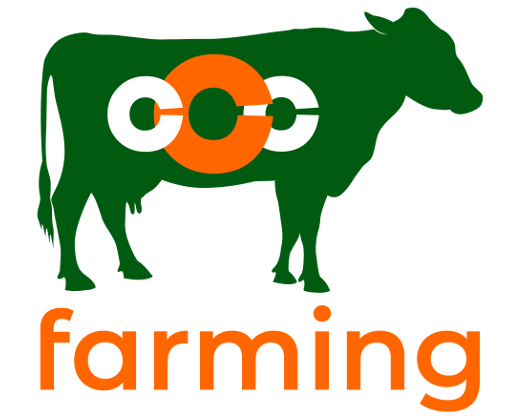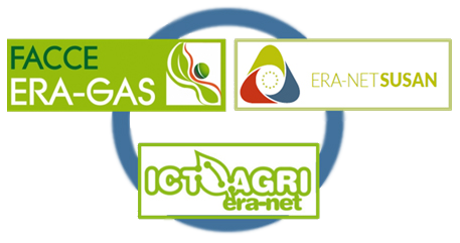Minutes of CCCfarming skype Teams meeting of 29th April 2021
Present: Bob Rees; Valentina Becciolini; Diāna Ruska; Kaspars Naglis-Liepa; Violeta Juškienė; Paul Hargreaves; Matteo Barbari; Vergé Xavier; Niklas Sölzer; Paul Galama; Adam Cieślak; Malgorzata Szumacher; Sven Koenig, Nadege Edouard, Chris Flechard; Katja Klumpp, Abele Kuipers
Agenda:
- 1.Concept minutes of CCCfarming meeting of 19 February 2021 are approved
- 2.Announcement
- - CCCfarming partners are invited to the EAAP FreeWalk seminar in Davos, late August 2021; it concerns 3 sessions about dairy cattle housing.
- - A webinar about “Vision on reducing emissions on dairy farm level” was held on Friday 16 April 2021. Speakers Jean-Louis Peyraud, Nadege Edouard, Katja Klumpp, Sven Koenig, Bob Rees, Peter Groot Koerkamp and Diana Ruska did a good job. We received many compliments. The presentations are on the CCCfarming website.
- 3. WP1.1 + 1.3: Overview field study farms. Valentina tells that the overview is still in progress. She indicates some countries that still need to submit data. A report will be prepared with all farms included (still needed: data from all French farms; photos from Netherlands’ farms; Latvian data, etc.).
- 4. WP1.2: Report about emission measurements tools is in progress
- 5. WP1.5: 1st round emission measurements with simplified method
- Most countries are active with 1st round of measurements. France is behind. The Netherlands completed it measurements in March 2021 under spring conditions. Thus this visit belongs to the spring season. Next winter we will do the measurements for the winter season. No results yet known from the French lab. Although, the French lab (Anne-Sophie Lissy) reported that they did receive samples from some of the partners.
- 6. WP1.4 - NPC balances
- Most partners are in progress. They have to estimate the storages at 1st of January afterwards. Germany is doing the NPC administration on 4 out of 8 of the field study farms.
- 7. WP1.6 – Kitchen table talks
- The French team is behind with visiting farms. The German team completed 3 kitchen table talks, and is urged to complete these talks on all farms.
- 8. WP2: Information provided about WP2 is presented in the Annex of these minutes.
- 9. WP3.1: Mitigation practices – ranking, abatement cost, etc. (Vera Eory, SRUC); Vera is not present, thus this task will be covered in the next meeting.
Abele Kuipers, 29 June 2021
Annex to minutes CCCfarming: info at 29th of April 2021 about WP2
Task 2.1.1 Study innovative housing systems
Leader: WUR
UR has built and is now testing 4 floor and manure handling systems at Dairy Campus. Each barn has 16 cows. This includes as reference the cubicle barn and for exploration the cow-toilet, rubber floor with grooves and holes, and the permeable artificial floor with several layers. The three innovative barn or floor types show different methods of separation of urine and faces. All three systems result in separating (part) of the urine from the faces. Thus two storage facilities are needed for each of the innovative barns.
All emissions (gasses) are measured continuously in the four small barns.
The cow-toilet collects about 1/3rd of the 32-36 litre urine produced per cow per day. This needs to increase. The rubber floor is recently combined with sprinkling sulfuric acid over the floor at regular intervals to diminish the ammonia outflow from the floor and urine storage. This combination is chosen hoping to realize acceptable NH3 emission reduction targets.
Contribution INRAE Pegase
- Task 2.1.1 Housing, with WUR
- Some ideas to developp around
- • Catching and burning CH4 at the house exit level
- =>“climatic rooms” in which we can house 3 to 5 cows for some weeks. The rooms are closed and the outlet air could be easily catched at the end of the pipe. BUT, what minimal concentration needed? OR
- • Catching NH3 from under the bedded pack layer => would need some adaptation of an existing straw bedded semi-open small part of a dairy house (~10 cows?)
- • Catching and burning CH4 at the house exit level
- Task 2.1.2 Study and monitor manure storages and innovative handling techniques
- Leader: LUHS
- Studies are carried out to determine the influence of various factors on emissions from manure during storage.
- Firstly, a study was conducted to evaluate the effect of probiotics on emissions from manure during storage in experimental containers. The samples of cattle manure were collected from project farms (liquid and semi liquid manure, slurry,) and transported to the LUHS Animal Science Institute and placed in the climate chambers. Manure from each farm was placed in experimental containers which were divided into 3 groups: Group 1 (Control) - manure without additives; Group 2 - manure surface sprayed with probiotics; Group 3 - manure mixed with probiotics.
- The passive chamber method was used to investigate emissions from manure. Ammonia emissions were measured on days 1, 3, 5, and 7. The manure composition was also analysed at the begining and end of the experiment for: Dry matter content, Total (Kjeldhal) Nitrogen content, Ammonium Nitrogen, Total solids, Volatile solids, Ash content, Total ammonia and pH.
- Preliminary results showed that the use of probiotics allows a slight reduction in ammonia emissions over a seven-day storage period. In addition, it has been found that a better effect is to spray the probiotic on the surface of the manure rather than mixing it inside. To ensure the accuracy of the measurements, it is planned to repeat this study with probiotics and possibly perform an analogous study using acidification in experimental containers. Also, a similar study is planned to determine the effect of acidification of slurry in the experimental containers.
- To determine the effect of slurry acidification on emissions and slurry composition, a study is being conducted using innovative manure handling technology - SLURRY ACIDIFICATION IN-FIELD - the equipment (see picture), that allows slurry acidification on the field during the fertilization process. In addition to the composition of slurry, the soil is analysed, as well as the influence of acidificated slurry on the yield of cultivated crops in comparison with non-treated slurry.
- Preliminary results from the study showed that fertilization with acidified slurry increased the production of barley by 13 %, fodder maize by 11 %, green mass by 15 %, oats and spring wheat by 4 % comparison with the fields fertilized with non-treated slurry. Also, the study has shown that field fertilization with acidified slurry increased the protein content in barley by 3,4 %, in green meadow grass by 15,3 %, in oats by 1,5 % and in spring wheat by 0,4% in in comparison to the fields fertilized with non-treated slurry.
- It is planned to try to use the equipment purchased in our project (air sample bag/ Vac-U-Chamber) for collection and analyses of air samples and to measure ammonia emission during fertilization with acidificated and non-treated slurry. See photo SLURRY ACIDIFICATION IN-FIELD:
- Task 2.2.2 - Study and monitor novel feeding practices related to crops
- Leader: INRAE Pegase (Fr) ; Nadege Edouard
- Partners: INRAE SAS (Fr), Idele (Fr), LLU (Latvia), NRIAP (Poland)
-
- General objective of the task:
- • study the effects of feeding strategies related to crops including grazing / no grazing and complementation with maize silage with or without concentrate on GHG (CO2, CH4, N2O) and ammonia (NH3) emissions
- Contribution of INRAE Pegase
- Two experiments (reprogrammed due to covid => 2021 in progress & 2022) in controlled conditions (trough)
with varying proportions of fresh grass and maize silage in the diet (with or without concentrates)
- • Impacts on
- ◦ N use efficiency (N milk / N intake)
- ◦ N flows at the animal level (N intake, N milk, N urine, N feces)
- ◦ Manure composition (urine, feces, reconstituted slurry)
- • No direct measurements of GHG and NH3 but some estimations from the manure composition (using IPCC and EMEP) Financed by another project but results available for CCCfarming
-
Contribution of INRAE Pegase, INRAE SAS and Idele
-
- Two experiments at two different periods (spring 2022 and autumn 2022) comparing different grazing time and maize silage complementation:
- • 100% grazing
- • grazing during the day, housing during the night with maize silage + concentrates (total mix ration)
- • 100% housing with maize silage + concentrates (total mix ration)
-
- Some ideas to developp around
- Impacts on
- ◦ N use efficiency, manure composition
- ◦ GHG and NH3 emissions at the house + storage level (link with task 2.1.2, Idele)
- ◦ GHG and NH3 emissions at the pasture level (link with task 2.4.1, INRAE SAS) Were planned in a new building but too much delayed => reprogrammed in an existing building but with less cows (6 instead of 12)
- Contribution of LLU (Latvia)
- No experiment planned
- Demonstration farms
- Expertise on N excretion depending on CP diets
- Contribution of Poznan University of Life Sciences (Poland)
- To be discussed!

